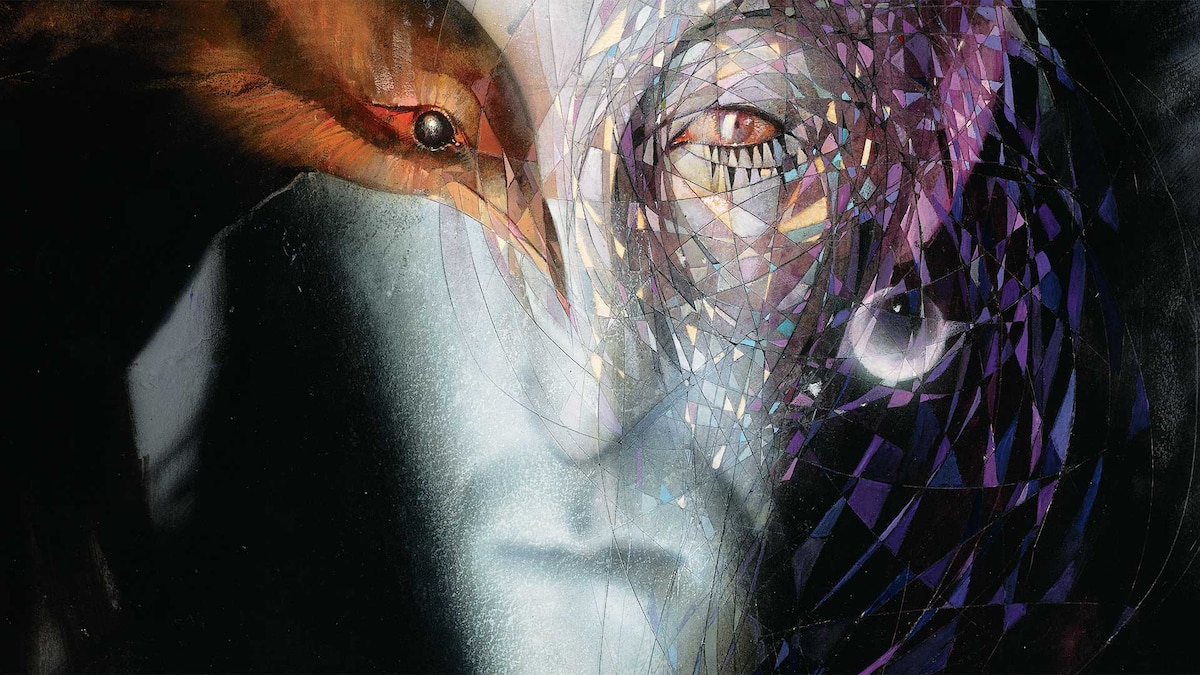Generations of readers have met Morpheus and the Endless, been introduced to the likes of Hob, Lucien and the Corinthian, and been entranced by the strangeness and wonder of their tales. The Sandman collections have been read, reread and loaned to friends and family—serving as a gateway to a lifetime of comic book fandom for countless fans. They are touchstones capable of standing shoulder to shoulder with our world’s best works of fantasy, no matter the medium.
Since Neil Gaiman first introduced us to his hero, many have written about the series. But we were curious to hear what the man who created it thinks of The Sandman after all these years. We invited Gaiman to share his recollections on each volume. After all, if you’re thinking of journeying through The Dreaming for your first time, who could be a better guide? Here are Neil Gaiman’s book-by-book ruminations on The Sandman.
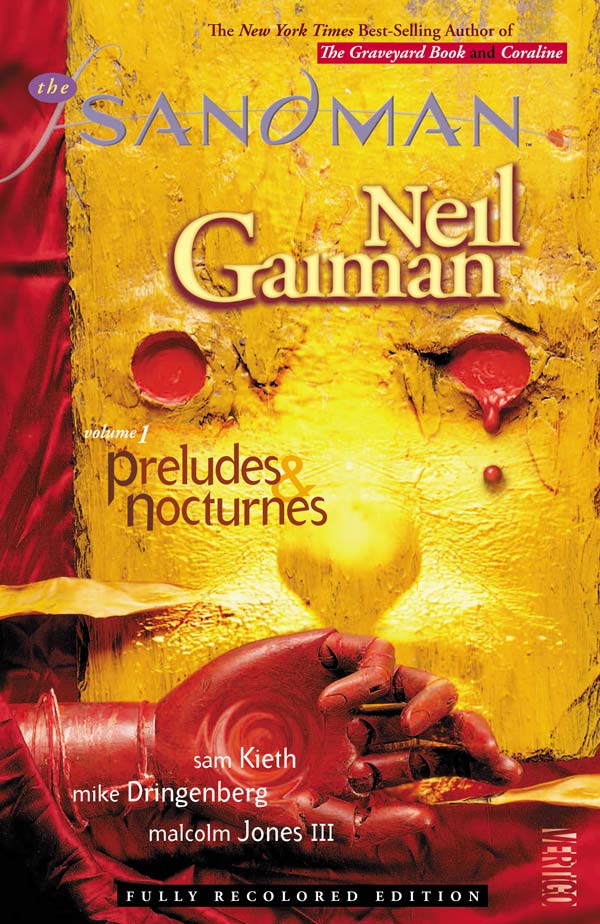
The Sandman Vol. 1: Prelude and Nocturnes
Containing issues #1-#8 and featuring cameos by John Constantine and (yes!) Martian Manhunter, it’s clear the series is still finding its voice in this initial volume. Nevertheless, it contains several critical and fan favorite stories, including the shocking “Dream a Little Dream of Me,” the wistful “The Sound of Her Wings,” which introduced Morpheus’ sister Death, and the downright terrifying “24 Hours,” which recently topped our DC All Access List of Scariest DC and Vertigo Stories.
I look back on this as the place it all started. So much of the groundwork was laid for what we were going to do. You can see that we are all finding our feet, but the characters all feel like the people they would become.
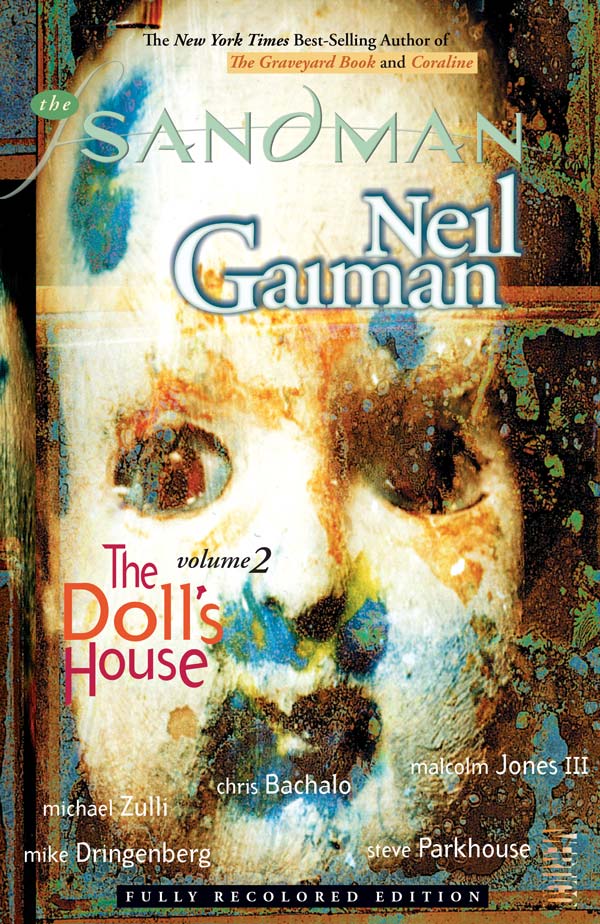
The Sandman Vol. 2: The Doll’s House
One of the great things about The Sandman is how quickly the series hit its stride. The Doll’s House ranks among the best Sandman stories with its tale of Morpheus’ search for three escaped dreams that parallels a young woman’s search for her missing brother on Earth. To reveal more would be unthinkable, but it’s worth pointing out that this volume introduces the rest of the Endless (for the most part), the immortal Hob and the terrifying homicidal dream known as the Corinthian.
The Doll's House was the place where it started to feel like was growing up. It's darker, and Dream steps further into the background.
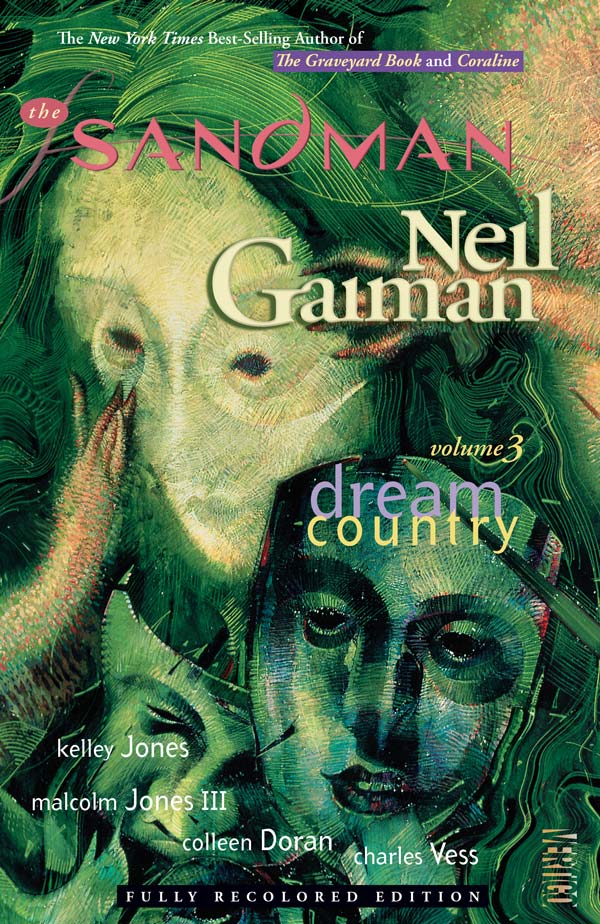
The Sandman Vol. 3: Dream Country
One of The Sandman’s hallmarks is how it masterfully alternates between multi-issue storylines and simpler, single-issue tales. This third volume collects four of these standalone stories, but don’t dismiss it as inconsequential. After all, one of those stories is the World Fantasy Award-winning “A Midsummer Night’s Dream,” which is one of the finest issues in the series’ run.
It was shocking and delightful to be nominated for an award for a short story, and have that be a comic. That Charles Vess and I won was amazing. They changed the rules the next morning to make sure it could never happen again.

The Sandman Vol. 4: Season of Mists
Arguably the best volume of the series, Season of Mists represents The Sandman at its finest. This imaginative work of fantasy grows out of a seed planted in The Doll’s House that finds Morpheus journeying to Hell to free a former lover whom he banished there. However, his rescue attempt becomes greatly complicated when Lucifer unexpectedly abandons the underworld and leaves Morpheus the keys to the kingdom.
The quintessential Sandman storyline. (In my head it was originally called “Suppose They Held an Inferno and Nobody Came.”) I look back on this and it feels like everything came together.
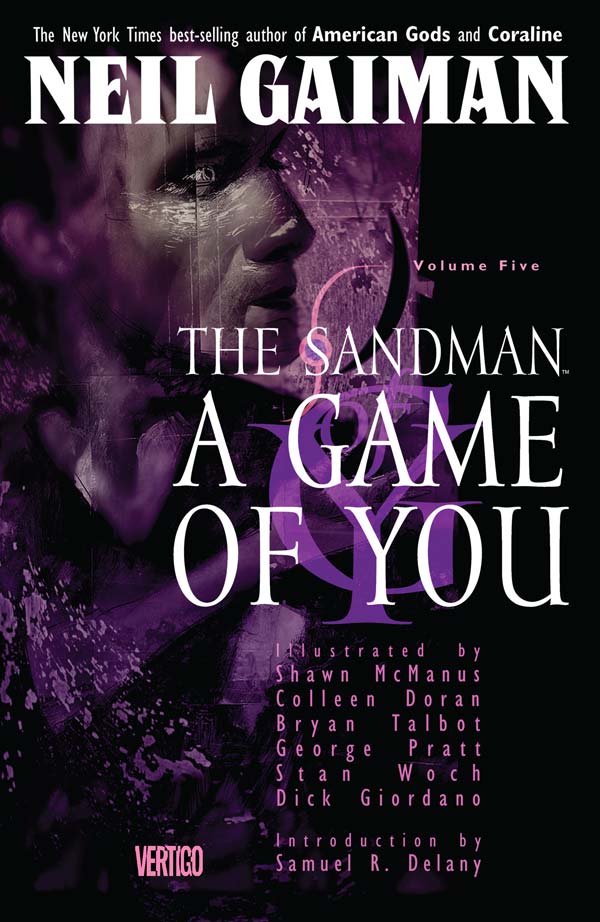
The Sandman Vol. 5: A Game of You
Controversial at its time, this fifth volume finds Gaiman treading the same territory as L. Frank Baum and C. S. Lewis, as a young woman and an unusual band of companions must journey to the fantasy world she dreamed when she was younger to save it from a malevolent force. Introducing Thessaly, the youthful-looking witch who would go on to play a key role in the series, it’s admittedly an odd story, but it’s also seen as a touchstone for comics due to Gaiman’s touching portrayal of the transgender character, Wanda.
This was the first time we'd been attacked for Sandman, as the American Family Association and the “Concerned Mothers of America” announced they were boycotting us. Wanda, a heroic trans woman, was probably the main reason for the boycott. But they didn't like the other gay characters or the weirdness either.
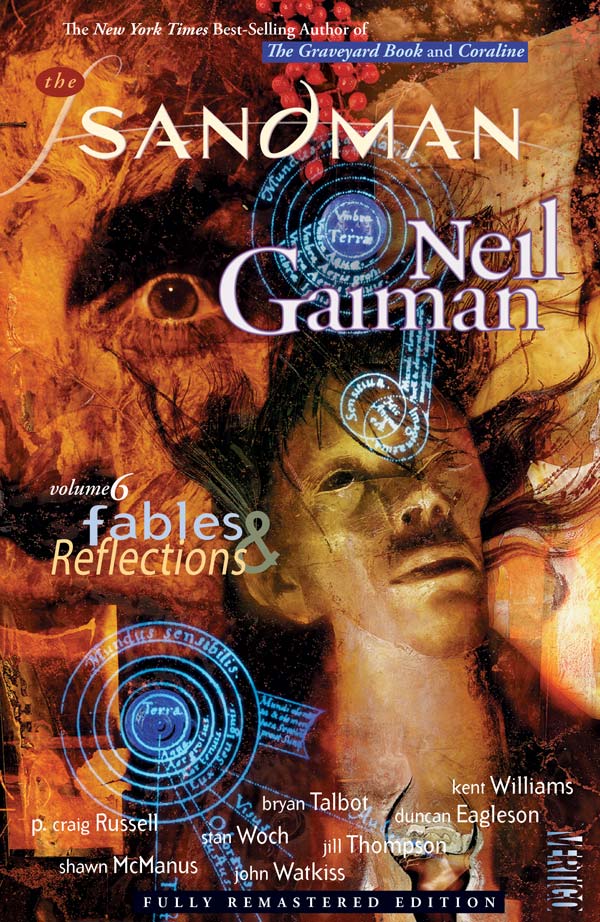
The Sandman Vol. 6: Fables and Reflections
A collection of nine short stories which were initially published between longer arcs, Fables and Reflections is the second Sandman “anthology collection.” Of the Sandman volumes, this is one of the most accessible to new readers since the stories within it stand alone and knowledge of The Sandman’s greater universe is unnecessary.
Between each big Sandman storyline, I would write short stories, to allow me to work with an amazing variety of artists, and to try things out I would do at greater length later.

The Sandman Vol. 7: Brief Lives
The colorfully eccentric Delirium has long been one of the most popular members of the Endless, and this volume is a good part of the reason why. Morpheus’ youngest sibling convinces him to help her find their long lost brother, Destruction, in this surprising journey through the waking world that helps set up the series’ final chapter.
That was a strange time for comics, and I was fortunate to have Jill Thompson as my artist for the whole story. She kept it grounded and human all the way.

The Sandman Vol. 8: Worlds’ End
The third collection of short stories may be the most unique. In a fantastic spin on Chaucer’s famous Canterbury Tales, an eclectic group of travelers stemming from many different realities and eras gather together at an inn at the worlds’ end. As they wait out a storm, they spin tales of the amazing places and people they’ve encountered on their journeys.
Worlds' End (note that tricky apostrophe) was fun to write. Possibly too much fun, as Stephen King points out in his introduction. At one point we realize the story we are reading may be a story inside a story inside a story inside a story...

The Sandman Vol. 9: The Kindly Ones
The climax of the initial Sandman saga (the final volume reads as more of an epilogue), The Kindly Ones is long and complex. A modern take on a classic Greek tragedy, Morpheus provokes the wrath of the Furies, agents of vengeance who target all who spill family blood. Picking up where Brief Lives left off, The Kindly Ones reveals a master comic creator at the top of his game. Even if fans didn’t really see it that way at the time.
This was the longest, strangest and hardest of all the Sandman storylines. While it was coming out, it was the least popular of all. Once it was collected and people could read it all at once, rather than over 16 months, it became one of the most popular.

The Sandman Vol. 10: The Wake
This moving final volume in the initial Sandman series begins with (SPOILER ALERT!) Morpheus’ wake after his death in The Kindly Ones. It features appearances by characters from within the series and the greater DC Universe as a whole, and a touching last chapter featuring a now-aged William Shakespeare that concludes the story which began in Vol. 3’s “A Midsummer Night’s Dream.”
We had to invent a new way of scanning and printing art in order to reproduce Michael Zulli's art directly from the pencils. I look at this final volume and I'm so proud of what everyone did—Michael Zulli, J Muth and Charles Vess.

The Sandman: The Dream Hunters
In 1999, Gaiman published this unique tale of Morpheus inspired by Japanese folklore. A prose story with illustrations, The Dream Hunters was eventually adapted to comics by P. Craig Russell. However, we suggest starting with the prose edition, which features gorgeous illustrations by Yoshitaka Amano.
I loved Mr. Amano's art, and wanted to write a story for him. He didn't want to do comics, though, so I wrote it as prose. His art was unbelievable. And then, ten years later, Craig Russell made it into a comic, and it was so beautiful and so different.
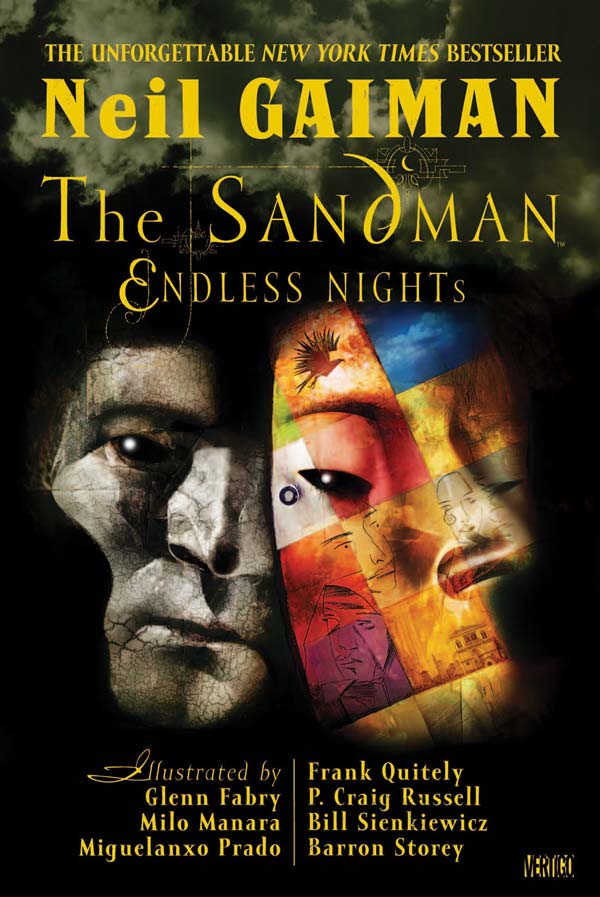
The Sandman: Endless Nights
For The Sandman’s 15th Anniversary, Gaiman published this fourth collection of short stories. Comprised of seven tales, each one featuring a different artist and focusing on a different member of the Endless, Endless Nights is a vibrant collection that works as both a welcome visit from missed friends for readers who have completed the series, or a primer on the Endless for readers who have yet to begin.
To celebrate 15 years, I wrote a story for each of the Endless. I felt like the luckiest boy in the world, seeing my stories made real by the artists we got. And I told a story that was the earliest Sandman story ever, and which would tie directly in to Sandman: Overture, a decade later.

The Sandman: Overture
Announced during The Sandman’s 25th Anniversary, this just-concluded tale shares a much deeper tie to the initial series than either The Dream Hunters or Endless Nights, making it essential reading for any fan of the series. A prequel story illustrated by J.H. Williams III, Overture explains the story of how Morpheus came to be captured in The Sandman #1, illustrating one of the things that longtime fans love about the series—its ability to change your understanding and perception of earlier stories.
This is where it begins, but you should read it after you've read everything else, after Sandman and Endless Nights. Then read Overture. Then read Sandman again, and things will be different.
THE SANDMAN: OVERTURE, as well as the entire Sandman library, are available in print and as digital downloads. Even better, almost all of The Sandman is currently on sale in the DC Comics Digital Store as part of THE SANDMAN DIGITAL COMICS SALE. There really is no better time to dive in.
For much more from Gaiman, be sure to watch his recent DC All Access Live discussion with fan and Pulitzer Prize winning author Junot Diaz.
